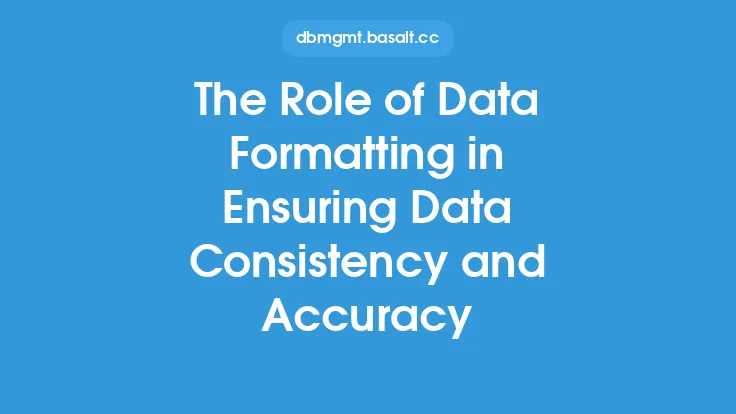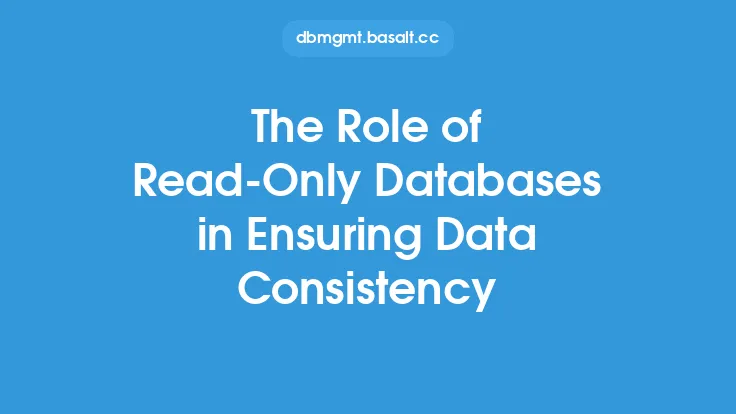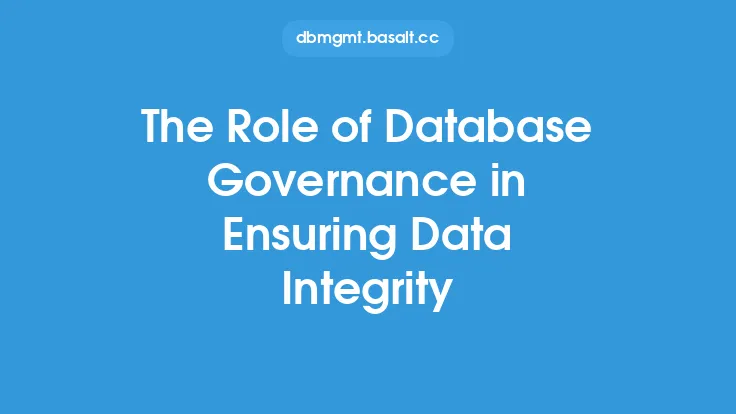Data cleansing is a crucial process in data management that involves identifying, correcting, and transforming inaccurate, incomplete, or inconsistent data into a more reliable and consistent format. The primary goal of data cleansing is to ensure that the data is accurate, complete, and consistent, which is essential for making informed decisions, improving data analysis, and enhancing overall data quality. In this article, we will delve into the role of data cleansing in ensuring data consistency and accuracy, and explore the various techniques and methods used to achieve this goal.
Introduction to Data Consistency and Accuracy
Data consistency and accuracy are two fundamental aspects of data quality that are closely related. Data consistency refers to the degree to which data is consistent in format, syntax, and semantics, while data accuracy refers to the degree to which data is correct and free from errors. Ensuring data consistency and accuracy is critical in various applications, including business intelligence, data analytics, and decision-making. Inconsistent or inaccurate data can lead to incorrect conclusions, poor decision-making, and ultimately, business losses.
The Data Cleansing Process
The data cleansing process involves several steps, including data profiling, data validation, data correction, and data transformation. Data profiling involves analyzing the data to identify patterns, trends, and anomalies, while data validation involves checking the data against a set of rules and constraints to ensure that it is correct and consistent. Data correction involves identifying and correcting errors, inconsistencies, and inaccuracies in the data, while data transformation involves converting the data into a more suitable format for analysis or processing.
Data Cleansing Techniques
There are several data cleansing techniques that can be used to ensure data consistency and accuracy. These include data normalization, data standardization, data validation, and data matching. Data normalization involves transforming the data into a standard format to ensure consistency, while data standardization involves applying a set of rules and standards to ensure that the data is consistent and accurate. Data validation involves checking the data against a set of rules and constraints to ensure that it is correct and consistent, while data matching involves identifying and merging duplicate records to ensure data consistency.
Data Quality Metrics
Data quality metrics are used to measure the quality of the data and identify areas that require improvement. These metrics include data accuracy, data completeness, data consistency, and data timeliness. Data accuracy metrics measure the degree to which the data is correct and free from errors, while data completeness metrics measure the degree to which the data is complete and comprehensive. Data consistency metrics measure the degree to which the data is consistent in format, syntax, and semantics, while data timeliness metrics measure the degree to which the data is up-to-date and relevant.
Data Cleansing Tools and Technologies
There are several data cleansing tools and technologies that can be used to support the data cleansing process. These include data profiling tools, data validation tools, data correction tools, and data transformation tools. Data profiling tools are used to analyze the data and identify patterns, trends, and anomalies, while data validation tools are used to check the data against a set of rules and constraints. Data correction tools are used to identify and correct errors, inconsistencies, and inaccuracies in the data, while data transformation tools are used to convert the data into a more suitable format for analysis or processing.
Challenges and Limitations
Despite the importance of data cleansing, there are several challenges and limitations that can make it difficult to ensure data consistency and accuracy. These include data complexity, data volume, data velocity, and data variety. Data complexity refers to the complexity of the data, which can make it difficult to analyze and process. Data volume refers to the large amounts of data that need to be processed, which can be time-consuming and resource-intensive. Data velocity refers to the speed at which the data is generated, which can make it difficult to keep up with the data flow. Data variety refers to the different types and formats of data, which can make it difficult to integrate and analyze.
Best Practices
To ensure data consistency and accuracy, it is essential to follow best practices in data cleansing. These include establishing data quality metrics, implementing data validation rules, using data profiling tools, and performing regular data audits. Establishing data quality metrics helps to measure the quality of the data and identify areas that require improvement. Implementing data validation rules helps to ensure that the data is correct and consistent, while using data profiling tools helps to analyze the data and identify patterns, trends, and anomalies. Performing regular data audits helps to ensure that the data is accurate, complete, and consistent, and that any errors or inconsistencies are identified and corrected.
Conclusion
In conclusion, data cleansing is a critical process in data management that involves identifying, correcting, and transforming inaccurate, incomplete, or inconsistent data into a more reliable and consistent format. Ensuring data consistency and accuracy is essential for making informed decisions, improving data analysis, and enhancing overall data quality. By following best practices, using data cleansing tools and technologies, and establishing data quality metrics, organizations can ensure that their data is accurate, complete, and consistent, and that any errors or inconsistencies are identified and corrected.





